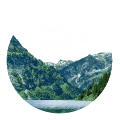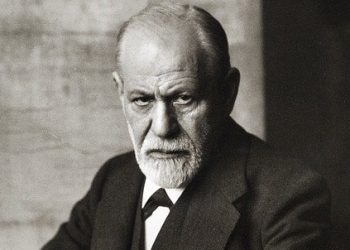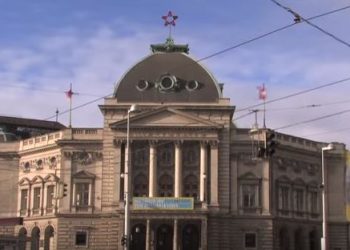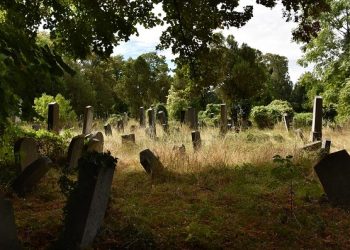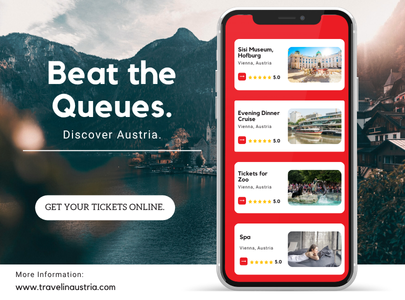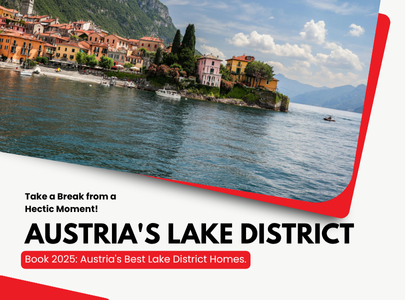There’s no doubt that markets are not Vienna’s strong suit; don’t expect the most colorful stalls and intoxicating scents like in authentic markets in the Far East. What you can find at Naschmarkt and other markets in the city, however, are special and fresh fruits and vegetables, fish, sweets, souvenirs, and also some popular Austrian food stalls alongside a culinary abundance from all over the world. Many stalls in Naschmarkt are owned by Jewish people, so don’t be surprised if someone suddenly speaks to you in Hebrew at a vegetable stand.
On Saturdays, a large flea market (Flohmarkt) is held next to Naschmarkt, where second-hand goods and antiques are sold. The flea market is a place with an interesting atmosphere and a good opportunity to buy an original souvenir from your visit to Vienna.
Please note: Naschmarkt is definitely not cheap; it’s a tourist attraction, and prices are accordingly. The market is closed on Sundays.
The Story of Naschmarkt
As early as the 18th century, there was an active market in the area where Naschmarkt is now located. At that time, it was a market for dairy products, and farmers from the villages surrounding Vienna would come to sell and trade milk and its products.
The market’s original name was Kärntnertormarkt due to its proximity to the bridge called Kärntnertor. In the early 19th century, its name was changed to Asch Market, and only in the early 20th century was its name changed to Naschmarkt (meaning “snack market” or “nibble market” in German, from “naschen” – to nibble/snack). The market’s name is likely a corruption of “Asch Market,” but it certainly reflects its essence and thus became its official name.
The Vienna River used to flow where the market is today. Over 110 years ago, the river was drained in this area, and a spacious street was built over it. The new space led to the rapid development of the market, and many stalls were added.
In the 18th and 19th centuries, the market stalls were temporary, and only in the early 20th century were permanent stalls built for the market vendors. In 1980, the market underwent an upgrade and improvement of existing stalls, but most of the ancient structures were preserved. Between 2010 and 2015, extensive renovations were carried out at the market, and it underwent a serious modernization.
Today, the market consists of three parallel rows of stalls. The outer row, which is close to the street, is reserved for restaurants and bars, while the two inner rows feature market stalls.
The Stalls at Naschmarkt
Naschmarkt is a place where you can find food from all over the world. Alongside typical Austrian dishes, you can find Italian, Japanese, Indian, Vietnamese, and even Israeli food. The fruits and vegetables at the market are considered fresh and good, and there’s a wonderful variety from all over the world. You can find exotic fruits that you probably haven’t seen elsewhere.
Walking along the market, vendors will offer you samples of sweets, pickles, cheeses, and various delicacies. You can enter small shops along the way and be impressed by the variety. Towards the end of the market, heading towards St. Charles Church, there are some Austrian stalls with wines and traditional folk food.
If you fancy some Israeli food, you can sit down for lunch at Neni restaurant (opens in new tab), which is considered one of the most beloved restaurants by Austrians (in Israeli terms, it’s hard to compare it to the food quality in Israel). The restaurant is located at stall 510. Alternatively, you can enjoy fresh and well-prepared fish at Umar restaurant (opens in new tab), which is considered the best fish restaurant in Vienna (stalls 38-39). For falafel lovers, you can eat at Dr. Falafel; they definitely have different hummus spreads.
The market visit experience is enhanced on Saturdays when the flea market takes place in the square next to the market.
The Market at Night
As darkness falls, stall owners close for the day, and the market transforms. The narrow street with rows of closed stalls definitely makes the market an interesting place even at night. It’s nice to leisurely walk through the street, enjoy the quiet, the ancient market buildings, and the many graffiti artworks on the stalls. During the day, when the market is bustling, it’s hard to notice all the small details, but at night it’s a special experience. Additionally, in the outer row, where the restaurants are located, the day continues as usual. The restaurants are full, and the atmosphere is wonderful. If you feel like going out for dinner, the market restaurants are a great place for it.
The Flea Market (Flohmarkt)
In 1977, the flea market opened in the parking lot next to Naschmarkt. Today, it’s an exciting place for tourists and locals alike. The market is quite large and has about 400 stalls that change weekly. Anyone can rent a spot at the market and offer their wares, and sometimes you can find real bargains. The market features artworks, household goods, books, music, and, of course, antiques.
The market operates every Saturday from 6:30 AM to 6:30 PM.
- Address: Kettenbrückengasse, 1060 Wien
Essential Information for Visiting Naschmarkt
Operating Hours: The market is open every day of the week except Sundays.
Food Stalls:
- Monday – Friday: From 6:00 AM to 7:30 PM
- Saturday: From 6:00 AM to 5:00 PM
Restaurants: Open from around 9:00 AM until before midnight.
How to Get to Naschmarkt and the Flea Market?
The market is located between two subway stations: Karlsplatz and Kettenbrückengasse. Subway line U4 (the green line) passes between these stations. If you get off at Kettenbrückengasse station, you’ll be at the back of the market (where the flea market is held), and from there you can walk through the stalls towards Karlsplatz and the church.
You can also reach the market from Karlsplatz station. Subway lines U1 (the red line) and U2 (the purple line) also stop at this station. From there, you’ll need to walk about 10 minutes to reach the market.
More information about the market:
- Address: Wienzeile, 1060 Wien
- Map:
Other Interesting Places Near the Market:
Majolikahaus
As you walk along the market, look to the left side of the street (the side called Linke Wienzeile) and look for one of the houses numbered 38, 40, 42. These houses were designed by the architect Otto Wagner. House number 40, in particular, is very impressive and uniquely designed with colorful ceramic tiles.
Fillgraderstiege Staircase
A magnificent staircase built in 1905, the fourth most beautiful in Europe. It is located about 200 meters from the flea market square near the Kettenbrückengasse subway station.
- Address: Fillgraderstiege, 1060 Wien
Secession Building (Secessionsgebäude)
The Secession was an artistic movement belonging to the Art Nouveau and Jugendstil movements. The movement was founded in 1897 in Vienna. The artists’ aspiration in the movement was to create unique art detached from the classical motifs of art and the principles of the Austrian Academy of Art. The first president of the movement was the famous painter Gustav Klimt.
In the year the movement was founded, the Secession Building was also erected, designed by the architect Josef Maria Olbrich. It’s easy to identify the building at the end of the market near Karlsplatz station due to the golden dome adorning it. The building displays art objects and works related to the Secession movement, the most famous of which is Klimt’s painting called: Beethoven Frieze.
- Address: Friedrichstraße 12, 1010 Wien
Other Less Touristy Markets:
If you like markets and want to experience Vienna’s less touristy markets, you can choose from these:
1. Karmelitermarkt (Carmelite Market)
This small market is one of Vienna’s oldest markets. It’s a short distance from the Old Town center, Schwedenplatz, and Taborstraße (the Jewish Street). It’s definitely a local market, and you probably won’t see many tourists there. The market has about 80 stalls, including vegetable, fruit, cheese, and meat stalls (they even sell horse meat). Additionally, there are many restaurants, bars, and galleries. The market is surrounded by the ancient buildings of the Second District.
On Fridays and Saturdays, a farmers’ market is held in the permanent market area, where you can find fresh food, vegetables, and fruits.
Operating Hours: The market is open every day of the week except Sundays.
Food Stalls:
- Monday – Friday: From 6:00 AM to 7:30 PM
- Saturday: From 6:00 AM to 5:00 PM
Restaurants: Open from around 9:00 AM until before midnight.
How to Get There?
The closest station to the market is Taborstrasse subway station (the Jewish Street). Subway line U2 (the purple line) stops at this station. From there, you’ll need to walk about 6 minutes.
Alternatively, you can go to Schwedenplatz subway station, where lines U1 (the red line) and U4 (the green line) stop. From there, you’ll need to walk about 10 minutes.
- Address: Krummbaumgasse / Leopoldsgasse / Haidgasse 1020 Wien
- Map:
2. Brunnenmarkt (Fountain Market)
This market is located in the heart of Vienna’s 16th district and is known as the Turkish Market. If you want to buy food and household items cheaply, this market is especially suitable for you. The long and narrow market street is packed with many shops and stalls, and the selection of goods is definitely great. In recent years, galleries and interesting shops by young artists and creators have opened in the streets adjacent to the market, and gradually the area is changing and becoming hip and interesting.
Operating Hours: The market is open every day of the week except Sundays.
Food Stalls:
- Monday – Friday: From 6:00 AM to 7:30 PM
- Saturday: From 6:00 AM to 5:00 PM
Restaurants: Open from around 9:00 AM until before midnight.
How to Get to the Market?
The shortest way to reach the market is to travel to Josefstädter Straße subway station. The brown line, U6, stops at this station. From there, you’ll need to walk about 5 minutes to the market.
- Address: Brunnengasse / Yppenmarkt 1160 Wien
- Map:
Planning to continue exploring the city after visiting the market? You can continue towards the city center and the Karlsplatz area. You can visit the State Opera, the Albertina Museum, the Stadtpark, or St. Charles Church, where the famous Vivaldi concert takes place.

